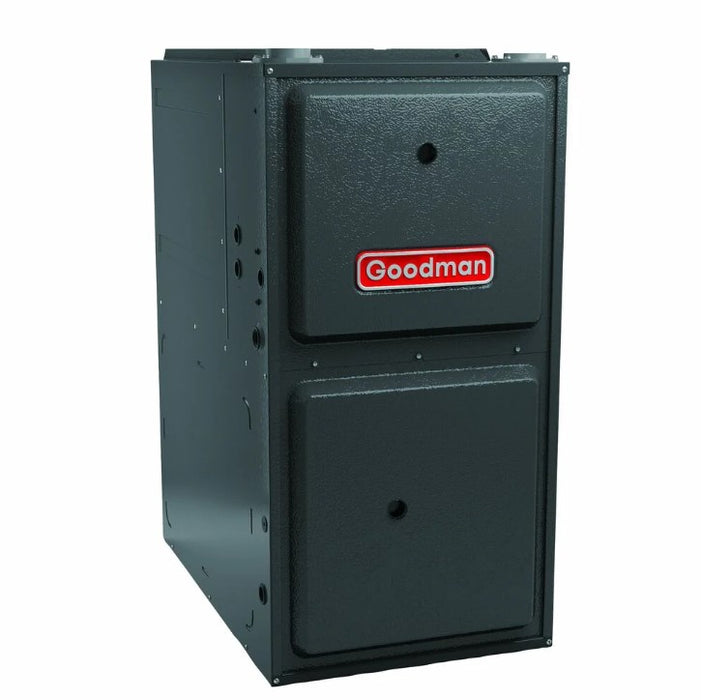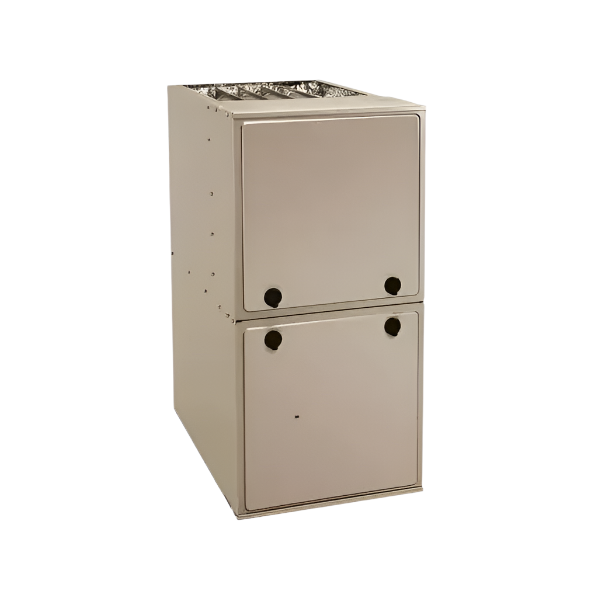Order Online or Call Us ! (833) 658-3387
(833)-658-3387
support@hvacstore.com
Mon-Fri: 9am-9pm EST

The primary difference between heat pumps and furnaces lies in how they generate heat. Furnaces burn fuel (like natural gas or oil) to produce heat, while heat pumps transfer heat from one location to another, either from the outside air or the ground.
Heat pumps are also capable of both heating and cooling, whereas furnaces typically only provide heating. Which of these heating systems should you choose? It depends on key factors, and your climate is just one of them. Continue reading to learn more.
|
Factors |
Heat Pump |
Furnace |
|
Energy efficiency |
Highly efficient (transfers heat); best in mild climates |
Lower in mild regions; may increase in extreme cold |
|
Installation cost |
Typically higher due to dual heating/cooling capability |
Lower upfront cost, especially for gas models |
|
Operating costs |
Lower in mild regions; may increase in extreme cold |
Gas furnaces often cheaper to run in colder climates |
|
Climate suitability |
Ideal for moderate climates |
Best suited for colder regions |
|
Lifespan |
Around 10–15 years |
15-20 years |
From the table above, it becomes clearer that heat pumps are generally more energy-efficient in milder climates and offer both heating and cooling, while furnaces are often more effective in colder regions and excel at providing consistent heat.
Meanwhile, to make a really informed decision, you have to know how each one works, its installation requirements, ongoing costs, and so on.

A heat pump operates similarly to a two-way air conditioner. In winter, it pulls heat from the outside air (even when it’s cold), then compresses it, and moves it indoors to warm your home. In summer, it reverses the cycle by taking heat from inside and pushing it out.
The refrigerant absorbs and transfers heat as it flows through the system, then the indoor blower fan circulates the heated or cooled air through your vents. Some units have Heat Pump Inverters. This is a variable-speed compressor technology used in some heat pumps.
Instead of cycling fully on or off, it adjusts output to match demand, improving efficiency, reducing energy use, maintaining steadier temperatures, and operating more quietly than standard fixed-speed units.

A furnace doesn’t transfer heat like the heat pump; it generates it. It burns fuel (usually gas or oil) or uses electric resistance to create heat. That heat warms up a metal component called a heat exchanger.
Then, the blower fan pushes air across the hot exchanger, sending warm air through your ductwork. And this can happen in three different ways:
In an upflow furnace, cool air enters at the bottom, passes through the heat exchanger, and is discharged upward into ductwork above the unit. These are typically installed in basements or closets where ductwork runs overhead.
In a downflow furnace, air enters at the top, is heated, and then pushed downward into ductwork beneath the unit. These are common in homes with ducts located under the floor, such as those with slab foundations or manufactured homes.
Multi-positional furnaces are designed for flexible installation. They can operate in upflow, downflow, or horizontal configurations, making them ideal for homes with space or duct layout constraints.
This versatility simplifies installation and enables the system to be matched to various floor plans.
READ MORE ON UPFLOW AND DOWNFLOW FURNACES
Factors such as energy efficiency, installation cost, operating costs, climate suitability, and lifespan must be taken into consideration before making your decision. Here’s how both commercial heating systems compare:
Heat pumps take the lead in terms of energy efficiency. Instead of creating heat, they transfer it, delivering up to three times more heat energy than the electricity they consume. That reduces your power bill by a considerable amount, especially in places with milder winters.
NOTE: This refers to COP (Coefficient of Performance) and applies to optimal conditions, not extreme cold.
Furnaces, on the other hand, generate heat by burning fuel (like gas or oil) or using electricity, which naturally uses more energy.
Even high-efficiency models that convert over 90% of fuel into heat still consume more energy overall than a heat pump in moderate climates.
In freezing conditions, a furnace may run more efficiently because it doesn’t struggle to find heat in the air, and the blower fan helps distribute that heat quickly and effectively.
Heat pump units generally come with higher upfront costs, often ranging from $4,500 to $5,700 for the system alone.
For instance, the Goodman 3 Ton 13.4 SEER 2 Packaged Heat Pump Unit is priced at $4,565.
Although the installation cost is higher, heat pumps deliver significant long-term savings. In many regions, homeowners save on their energy bills, which could mean cutting a winter electricity bill from $300 to $180–$ 210, resulting in a monthly saving of around $90 to $120
Heat pumps also serve as cooling units, sparing you the need to purchase a standalone air conditioner, which can potentially save you $200–$250 in avoided summer cooling costs.
Meanwhile, heat pump installations often require electrical panel upgrades. And, cold-climate heat pumps often include electric resistance backup.
On the other hand, furnaces are more budget-friendly upfront. The Goodman 40,000 BTU 96% AFUE Gas Furnace is priced at $2,134, while a mid-range ACiQ 92% Furnace goes for about $1,577.
Over time, however, operational costs can accumulate, especially in cold regions where heating bills can regularly exceed $200–$400 per month.
This cost gap may narrow with a heat pump's higher efficiency, particularly in areas with moderate electricity rates.
When choosing between a heat pump and a furnace, your climate zone plays a massive role. Heat pumps are significantly more efficient in mild to moderate climates, especially where winter temperatures rarely drop below 0°C (32°F).
Heat pumps operate optimally in areas where the temperature remains above -7°C (19.4°F).
This makes them an excellent fit for regions like Northern California, Tennessee, or parts of North Carolina, where winters are cool but not extreme.
In contrast, if you live in a colder climate, especially where winter lows regularly dip below -15°C (5°F), a traditional furnace performs far better.
Gas furnaces generate high levels of heat quickly and can handle extreme weather without the need for supplemental systems.
States like Minnesota, Maine, and North Dakota are prime furnace territory, where long, harsh winters demand consistent, high-output heating that heat pumps may struggle to deliver efficiently without a backup source.
NOTE: Some cold-climate heat pumps are improving in this area, with newer models capable of operating down to -25°C (-13°F). However, these systems tend to cost more upfront and often still include backup electric resistance heating, which reduces overall efficiency.
When it comes to maintenance, heat pumps generally require more frequent attention than furnaces. Since they operate year-round, providing both heating in the winter and cooling in the summer, they experience more wear and tear.
Homeowners should plan for twice-yearly maintenance, once before the cooling season and once before the heating season begins.
This involves checking refrigerant levels, inspecting coils, cleaning filters, and ensuring proper airflow and electrical connections are in place. If properly maintained, a heat pump typically lasts 10 to 15 years.
Furnaces, on the other hand, only run during colder months, which results in less overall use and, consequently, less routine servicing. Annual checkups are usually sufficient and should be focused on the burner, heat exchanger, gas line, and air filters. With consistent upkeep, gas furnaces typically last 15 to 20 years.
High-quality models, such as the Goodman 40,000 BTU 96% AFUE furnace, commonly reach their full lifespan. This makes furnaces a lower-maintenance option overall, especially for homeowners who don’t want to worry about bi-annual servicing.
With growing awareness of climate change and the global push for sustainability, an increasing number of homeowners and builders are paying attention to the environmental impact of HVAC systems.
Green building codes and eco-friendly policies now encourage cleaner, more energy-efficient solutions, especially in urban developments and areas with strict environmental regulations.
Heat Pumps are generally the more eco-friendly option. Since they transfer heat rather than generate it by burning fuel, they produce no direct emissions during operation.
Their environmental performance is powerful when powered by renewable electricity sources, such as solar or wind.
This makes them a top choice for households seeking to reduce their carbon footprint and align with green energy standards.
Furnaces, particularly those powered by natural gas or oil, release carbon dioxide and other greenhouse gases into the atmosphere. While modern furnaces are becoming cleaner and more efficient, they still contribute more emissions overall.
In areas with stricter building codes or incentives for green energy, this can be a drawback.
Larger homes or those with multiple floors benefit more from a furnace or a dual-fuel system, as they offer stronger heat output and can warm up a space quickly and evenly.
Smaller homes, apartments, or open-plan spaces often work well with a heat pump, especially when paired with zoned mini-split systems for room-by-room control.
If you live in a home with cold spots or rooms that are hard to heat, the heating power of a furnace may be necessary. If your home is large, has high ceilings, or has multiple rooms to heat, a furnace or dual-fuel system may provide more effective heating.
Dual-fuel systems combine a heat pump and a furnace into a single unit, utilizing the heat pump when it's more efficient and switching to the furnace during harsh cold snaps.
For example, the Goodman 1.5 Ton 15.2 SEER2 Heat Pump + Furnace System (80% AFUE) allows you to toggle between electric heat transfer and furnace-generated warmth, depending on your climate.
It includes built-in controls that automatically determine which system to run based on outside temperature, so you get efficient heating when it's mild and reliable warmth when it's freezing.
This setup is ideal for climates that experience a range of mild to freezing conditions. However, dual-fuel systems require compatible controls and proper sizing.
While it costs more upfront than choosing just a heat pump or furnace, the payoff comes from consistently efficient operation and maintained comfort, no matter the weather.
A heating system is a major investment, and selecting the wrong choice can result in higher energy costs and a reduced equipment lifespan. That’s why expert advice and quality products matter.
At HVAC Store, our certified technicians can guide you through every step of the process.
We also offer both furnaces and heat pumps from trusted brands, along with professional support to ensure the perfect match for your climate and comfort needs.
Yes, especially with newer cold-climate models. Modern heat pumps are designed to perform efficiently even when temperatures dip below freezing, thanks to advanced compressors and refrigerants.
Yes, especially if you live in a region with cold winters and milder shoulder seasons. Dual-fuel systems, such as the Goodman 3 Ton 15.2 SEER 2 Heat Pump + 96% AFUE Furnace System, deliver year-round comfort by utilizing the high-efficiency heat pump when temperatures are moderate and automatically switching to the powerful furnace when temperatures drop.
In many cases, yes, but it depends on your long-term energy goals. Heat pumps are more energy efficient and can lead to lower utility bills over time, especially in moderate climates. They also offer cooling in the summer, which can eliminate the need for a separate AC unit.
However, the upfront cost (including installation and any needed electrical upgrades) can be significant. If your furnace is nearing the end of its life or you're looking to transition to more sustainable, electric-powered living, the switch may be well worth it.
placeholder